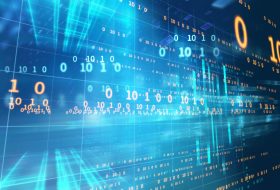What Does Cloud Observability Mean for FinOps?

Most enterprises run cloud infrastructure for global operations. Cloud data observability is emerging as a key area to understanding those operations, including infrastructure and cloud services costs.
Awareness about the need to understand cloud costs and observability has grown substantially in the past 24 months, and this is a red-hot area of development. At its base level, observability means collecting as much data from cloud infrastructure, applications, and cloud services as possible.
At a recent series of presentations on cloud observability at KubeCon in Chicago, we learned a lot about the movement.
One presenter -- Alolita Sharma, an AI/ML observability engineer with Apple -- presented a good list of the starting points of cloud observability:
- Telemetry data (as granular as possible) – including data from networks, applications, and cloud infrastructure.
- Streaming data for real-time collection, correlation, and analysis on the fly.
- AIOps tools that can use AI and machine learning (ML) to apply intelligent analysis to understand reliability patterns, anomaly detection, and trend analysis.
Where Does Observability Come From?
Now that we’ve outlined a basic need for observability, you might ask, Where does it come from?
The simplest answer is: everywhere. The more data, the better observability. The data and telemetry for observability can be collected from cloud infrastructure hardware, applications, and cloud services.
Here are some of the key providers of observability data:
Data analytics and application performance monitoring (APM) tools. Cloud-management, data, and applications monitoring specialists such as Datadog, Dynatrace, IBM, ServiceNow, Splunk, and Virtana supply observability tools. Some newer players include Cribl, Calyptia, Grafana Labs, Elastic, highlight.io, Honeycomb, and Logz.io.
Cloud service providers. The major cloud service providers, such as Amazon Web Services (AWS), Microsoft Azure, Google Cloud, Oracle Cloud, and others provide observability data to customers. This data can be fed into other tools using application programming interfaces (APIs).
Infrastructure providers. Major infrastructure providers such as Cisco, Dell, HPE, and others provide APIs for their hardware and software services. This data can be collected and used for observability. Observability and cloud management telemetry is also becoming a big theme for cloud networking and monitoring providers such as Aviatrix, Kentik, and Prosimo.
Open-source projects. There are a number of open-source projects for cloud management that are being used for observability and cloud-cost management. Some of these include OpenTelemetry (OTel), OpenCost, and KubeCost.
“We need OTel – and more people using it," said Reese Lee with New Relic, also a speaker at KubeCon.
What’s Missing from Cloud Observability?
Apple's Sharma said cloud infrastructure managers are just discovering the potential of observability. This technology will be crucial to manage and understand cloud costs and management.
One of the key struggles for many practitioners is getting enough data from cloud providers, said Sharma. “Is your provider giving you enough data about cost?” she asked a crowd of end-users during a session of KubeCon called Observability Day.
Another area of development is open-source projects. They are useful, said Sharma, but more are needed.
“There is not enough tooling for cost management today," she said. "I don’t think we have enough projects."
Some other challenges to delivering full observability, according to Sharma:
- Data may be incomplete or misleading
- Cloud provider data may not be granular enough
- Need to apply observability to cloud resource usage data with real-time telemetry data collection and correlation, ML trend analysis to gain an accurate data-driven understanding of resource utilization and spending patterns
- True observability can deliver a return on investment (ROI) for an organization with actionable accurate financial and operational planning and relevant data.
Overall, cloud observability remains one of the more fertile areas for cloud management and infrastructure, and it is rapidly bringing together data and analytics from many areas of the ecosystem.
Organizations such as OTel, open-source projects, and cooperation among vendors on data and telemetry APIs will be the key to delivering better visibility for apps and infrastructure.



